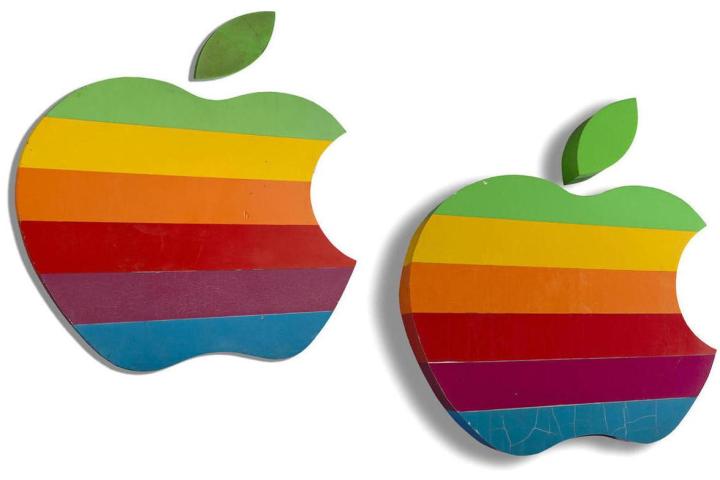
Do you have boatloads of money lying around that you don’t know what to do with? Are you an Apple fan or fanatic? If you said “Yes!” to both, you might want to get in on this chance to own some computing history.
Bonhams, a UK-based auction house, will be selling off signs draped with Apple’s classic colorful logo (pictured above) starting at $10,000 each. The signs were mounted to the front of the tech giant’s Cupertino, Calif.-based headquarters up until 1997. At that point, they were swapped out for the sleeker logo that you’re no doubt more familiar with by now.
There are two signs that will be sold off. The larger one measures roughly four feet from the leaf on the top of the apple, to the sign’s base, while the smaller sign measures about three feet. The former is constructed of fiberglass, while the latter is made of foam. Both suffer from some wear and tear, including cracks, faded paint, and other blemishes. Bonhams’ auction page for the signs states that the colors were chosen by former CEO Steve Jobs in an effort to add a touch of humanity to the firm’s image. The logo endured 31 years of service.
“Jobs appreciated the simplicity of the apple (with a bite taken out of it, so that no one would confuse it with a tomato), and also insisted on the use of colors to ‘humanize’ the company,” the auction house notes. “The Rainbow Logo was in service from 1976 until 1997, when it was revised into the monochromatic version in use today.”
The auction will take place in New York City on June 4, 1 p.m, ETD. However, you can place a bid from the Web here, in case you’re interested and won’t be in NYC at that time.
What do you think? Sound off in the comments below.


